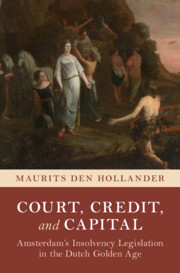Refine search
Actions for selected content:
615873 results in History
Preface to the Third Edition
-
- Book:
- An Economic History of Europe
- Published online:
- 02 October 2025
- Print publication:
- 02 October 2025, pp xv-xvi
-
- Chapter
- Export citation
Jonathan Harris, Byzantium and the Crusades, 3rd ed., 2022. London: Bloomsbury Academic. Pp. 306 + Appendices.
-
- Journal:
- Byzantine and Modern Greek Studies , First View
- Published online by Cambridge University Press:
- 02 October 2025, pp. 1-3
-
- Article
- Export citation
Preface to the First Edition
-
- Book:
- An Economic History of Europe
- Published online:
- 02 October 2025
- Print publication:
- 02 October 2025, pp xix-xx
-
- Chapter
- Export citation
Coda
-
- Book:
- The Colombo Plan
- Published online:
- 09 October 2025
- Print publication:
- 02 October 2025, pp 261-274
-
- Chapter
- Export citation
Introduction:
-
- Book:
- An Economic History of Europe
- Published online:
- 02 October 2025
- Print publication:
- 02 October 2025, pp 1-14
-
- Chapter
- Export citation
4 - The Nature and Extent of Economic Growth in the Pre-industrial Epoch
-
- Book:
- An Economic History of Europe
- Published online:
- 02 October 2025
- Print publication:
- 02 October 2025, pp 85-107
-
- Chapter
- Export citation
Index
-
- Book:
- Palestinian Doctors
- Published online:
- 12 September 2025
- Print publication:
- 02 October 2025, pp 272-282
-
- Chapter
- Export citation
Bibliography
-
- Book:
- The Colombo Plan
- Published online:
- 09 October 2025
- Print publication:
- 02 October 2025, pp 275-292
-
- Chapter
- Export citation
Paris Papamichos Chronakis, The Business of Transition: Jewish and Greek Merchants of Salonica from Ottoman to Greek Rule, Stanford, California: Stanford University Press, 2024. Pp. xx, 390.
-
- Journal:
- Byzantine and Modern Greek Studies , First View
- Published online by Cambridge University Press:
- 02 October 2025, pp. 1-2
-
- Article
- Export citation
Contents
-
- Book:
- Palestinian Doctors
- Published online:
- 12 September 2025
- Print publication:
- 02 October 2025, pp vii-vii
-
- Chapter
- Export citation
Abbreviations
-
- Book:
- Curating the Colonial Past
- Published online:
- 12 September 2025
- Print publication:
- 02 October 2025, pp xii-xii
-
- Chapter
- Export citation

Court, Credit, and Capital
- Amsterdam's Insolvency Legislation in the Dutch Golden Age
- Coming soon
-
- Expected online publication date:
- October 2025
- Print publication:
- 16 October 2025
-
- Book
- Export citation
11 - Inequalities between Individuals, Households and Nations
-
- Book:
- An Economic History of Europe
- Published online:
- 02 October 2025
- Print publication:
- 02 October 2025, pp 254-274
-
- Chapter
- Export citation
Figures
-
- Book:
- An Economic History of Europe
- Published online:
- 02 October 2025
- Print publication:
- 02 October 2025, pp x-xi
-
- Chapter
- Export citation
Acknowledgments
-
- Book:
- Curating the Colonial Past
- Published online:
- 12 September 2025
- Print publication:
- 02 October 2025, pp x-xi
-
- Chapter
- Export citation
2 - Class Matters: The Sociology of the Profession
-
- Book:
- Palestinian Doctors
- Published online:
- 12 September 2025
- Print publication:
- 02 October 2025, pp 36-70
-
- Chapter
- Export citation
7 - Nakba: The Displacement of the Medical Community
-
- Book:
- Palestinian Doctors
- Published online:
- 12 September 2025
- Print publication:
- 02 October 2025, pp 214-247
-
- Chapter
- Export citation
5 - International Archival (B)Orders
- from Part II - Struggle to Reveal
-
- Book:
- Curating the Colonial Past
- Published online:
- 12 September 2025
- Print publication:
- 02 October 2025, pp 167-199
-
- Chapter
- Export citation
4 - The Scramble for Kenya’s History and the Making of an Archival Limbo
- from Part I - Struggle to Conceal
-
- Book:
- Curating the Colonial Past
- Published online:
- 12 September 2025
- Print publication:
- 02 October 2025, pp 123-164
-
- Chapter
- Export citation
Contents
-
- Book:
- An Economic History of Europe
- Published online:
- 02 October 2025
- Print publication:
- 02 October 2025, pp v-viii
-
- Chapter
- Export citation
